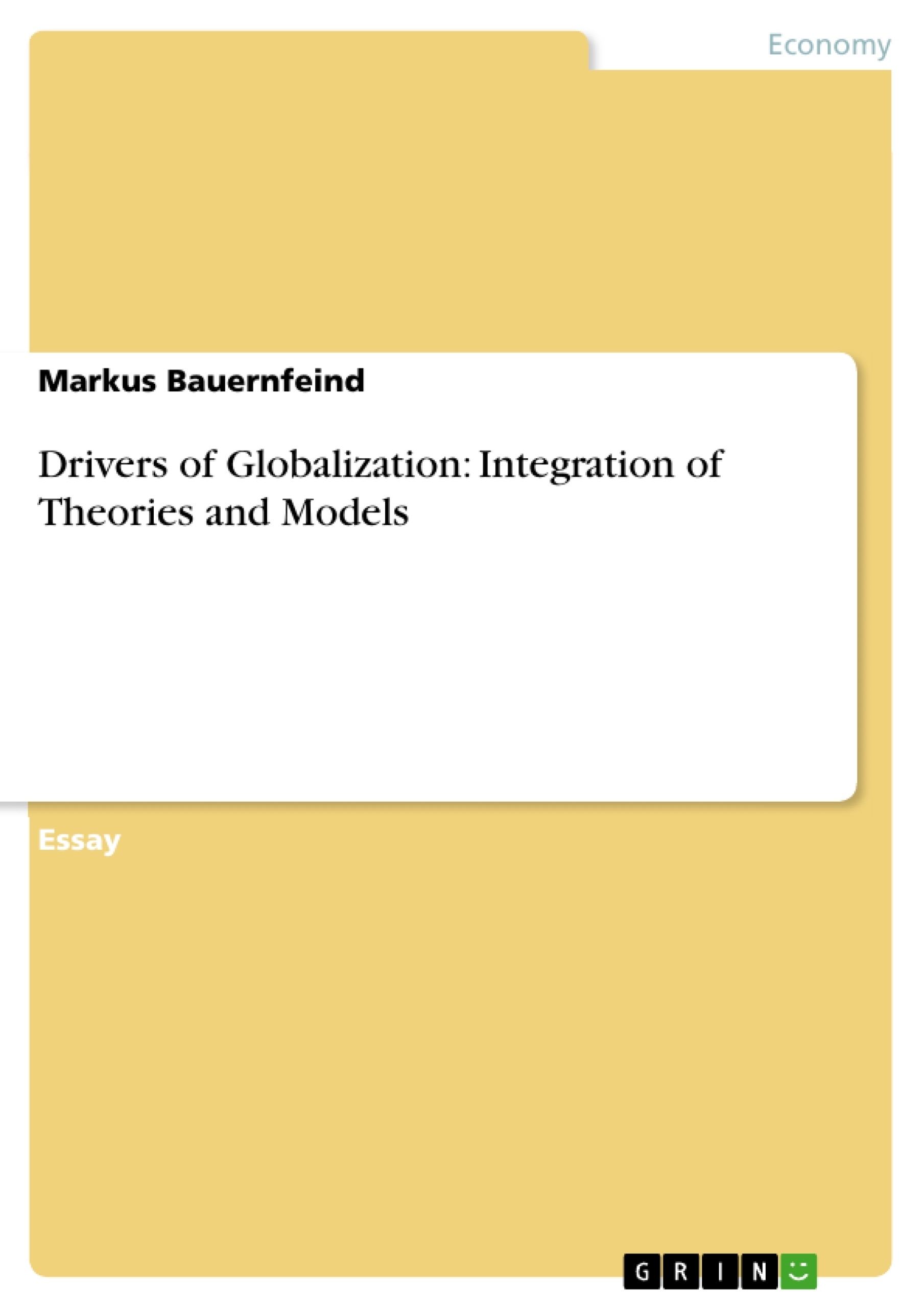"Globalization is not something we can hold off or turn off . . . it is the economic equivalent of a force of nature -- like wind or water." Bill Clinton (American 42nd US president (1993-2001)) The first part of this research paper will define the major drivers of globalization and then introduce some of the basic and advanced theories of international trade and business. With this foundations it will then try to integrate theories and drivers and compare them to the actual situation and discuss if they are appropriately describing what we are seeing today.
Table of Contents
- Introduction
- Drivers of Globalization
- Theories and Models of Gobalization and International Trade
- From mercantilism to Smith and Ricardo
- Ricardo to the next step: Factor Proportions Theory and the Leontief Paradox
- Vernon Life-Cycle Theory
- Porter's Diamond Approach
- Monopolistic Advantage Strategy
- Eclectic Theory
- Discussion of Theories and Drivers
- Ricardo-Mill and outsourcing
- Dunning, Cantwell and the influence of technology
- Bibliography
Objectives and Key Themes
This research paper examines the major drivers of globalization and explores key theories of international trade and business. The paper aims to integrate these theories and drivers, comparing them to the current economic situation and analyzing whether they accurately reflect global trends.
- Drivers of globalization, including technological, political, market, cost, and competitive factors.
- Evolution of international trade theories, from mercantilism to modern models like the factor proportions theory and the product life-cycle theory.
- Integration of theories and drivers, analyzing their applicability to contemporary global phenomena.
- Impact of technological advancements on globalization and international business.
- Comparative analysis of different theoretical frameworks and their strengths and limitations.
Chapter Summaries
The introduction defines the scope of the research and provides context by quoting Bill Clinton on the inevitability of globalization. It then outlines the structure of the paper, focusing on drivers of globalization and key theories of international trade.
Chapter 2 delves into the diverse drivers of globalization, classifying them into five distinct categories: technological, political, market, cost, and competitive factors. The chapter explores each driver in detail, providing examples and highlighting their impact on globalization.
Chapter 3 presents a historical overview of international trade theories, starting with mercantilism and leading up to modern models like the factor proportions theory, the Leontief paradox, and the product life-cycle theory. Each theory is discussed in detail, highlighting its key assumptions, contributions, and limitations.
Keywords
Globalization, international trade, drivers of globalization, theories of international trade, mercantilism, absolute advantage, comparative advantage, factor proportions theory, Leontief paradox, product life-cycle theory, monopolistic advantage, eclectic theory, outsourcing, technology, global competitiveness.
- Arbeit zitieren
- Markus Bauernfeind (Autor:in), 2005, Drivers of Globalization: Integration of Theories and Models, München, GRIN Verlag, https://www.grin.com/document/57026



